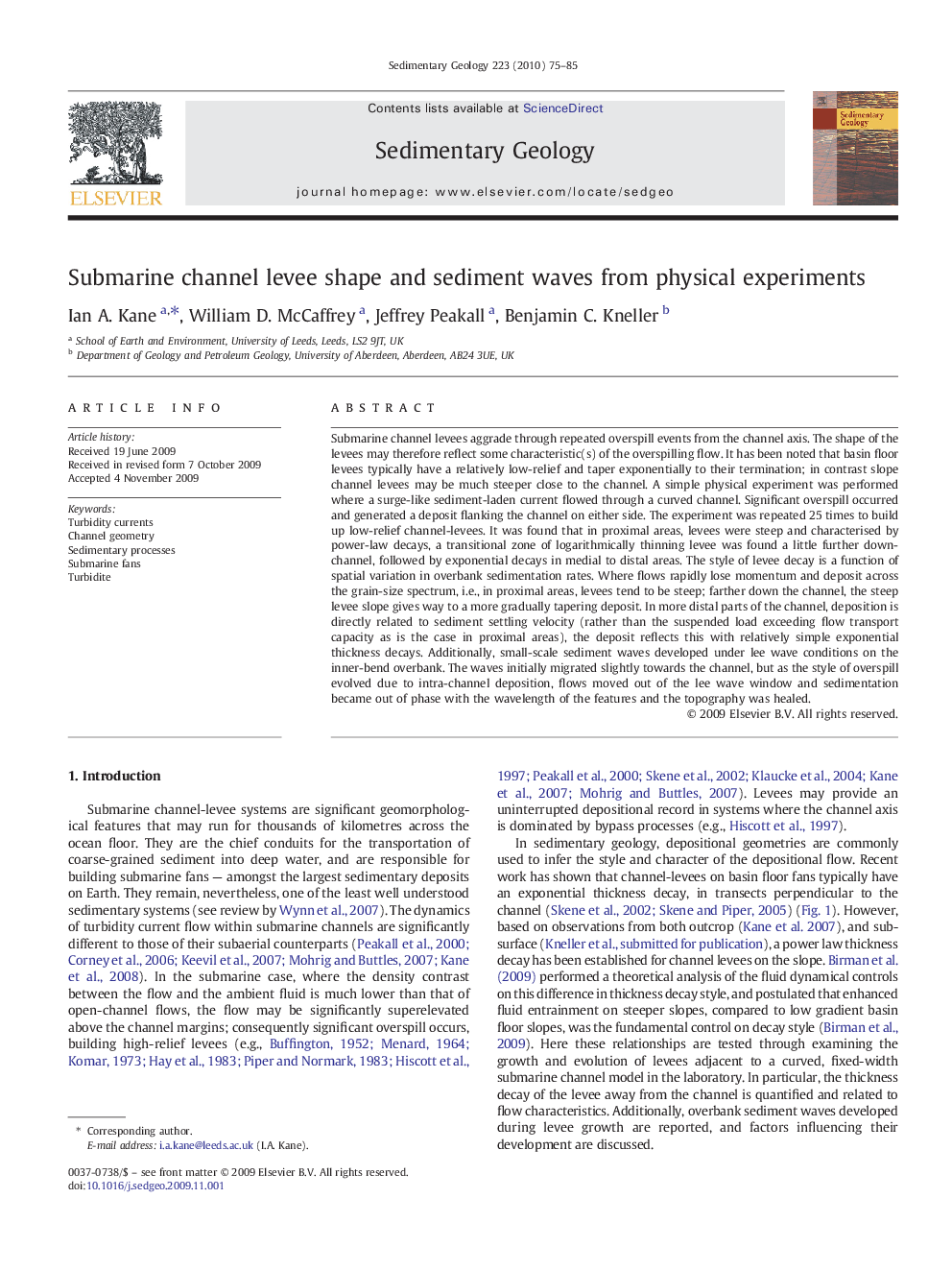| Article ID | Journal | Published Year | Pages | File Type |
|---|---|---|---|---|
| 4690344 | Sedimentary Geology | 2010 | 11 Pages |
Submarine channel levees aggrade through repeated overspill events from the channel axis. The shape of the levees may therefore reflect some characteristic(s) of the overspilling flow. It has been noted that basin floor levees typically have a relatively low-relief and taper exponentially to their termination; in contrast slope channel levees may be much steeper close to the channel. A simple physical experiment was performed where a surge-like sediment-laden current flowed through a curved channel. Significant overspill occurred and generated a deposit flanking the channel on either side. The experiment was repeated 25 times to build up low-relief channel-levees. It was found that in proximal areas, levees were steep and characterised by power-law decays, a transitional zone of logarithmically thinning levee was found a little further down-channel, followed by exponential decays in medial to distal areas. The style of levee decay is a function of spatial variation in overbank sedimentation rates. Where flows rapidly lose momentum and deposit across the grain-size spectrum, i.e., in proximal areas, levees tend to be steep; farther down the channel, the steep levee slope gives way to a more gradually tapering deposit. In more distal parts of the channel, deposition is directly related to sediment settling velocity (rather than the suspended load exceeding flow transport capacity as is the case in proximal areas), the deposit reflects this with relatively simple exponential thickness decays. Additionally, small-scale sediment waves developed under lee wave conditions on the inner-bend overbank. The waves initially migrated slightly towards the channel, but as the style of overspill evolved due to intra-channel deposition, flows moved out of the lee wave window and sedimentation became out of phase with the wavelength of the features and the topography was healed.
